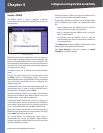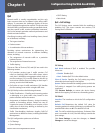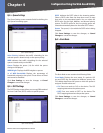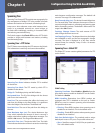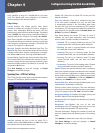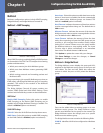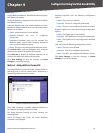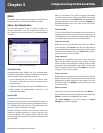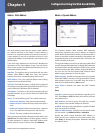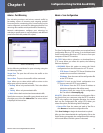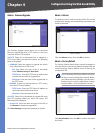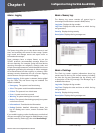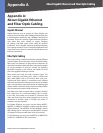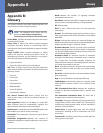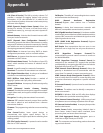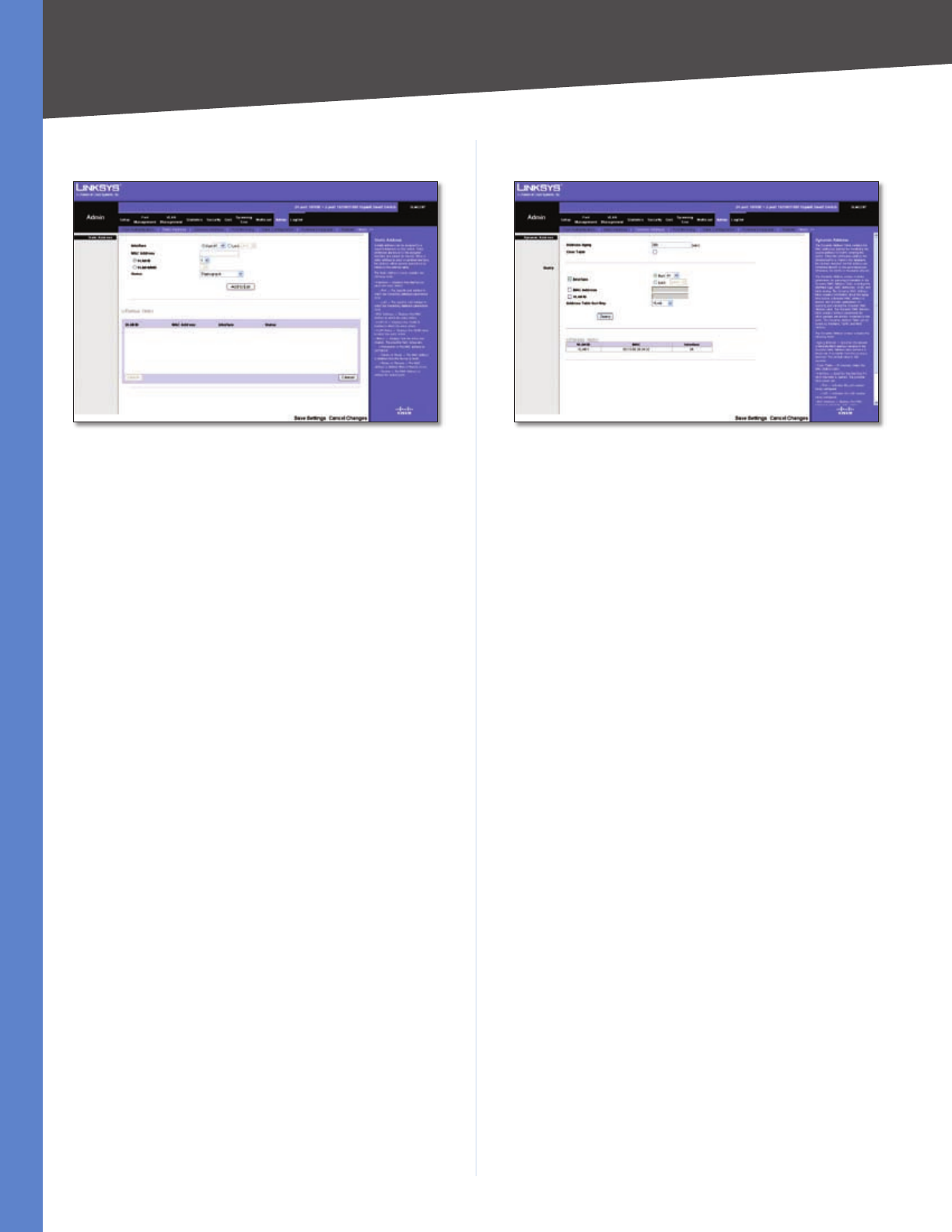
Chapter 4
Configuration Using the Web-based Utility
32
Business Series Smart Gigabit Ethernet Switch
Admin > Static Address
Admin > Static Address
The Static Address screen lets you assign a static address
to a specific interface on the Switch. A static address is
bound to its assigned interface and cannot be moved. If
a static address is seen on an interface to which it is not
assigned, the address is ignored and is not written to the
address table.
A list of all static addresses on the Switch is displayed at
the bottom of the Static Address screen. The top section
of the screen contains the following fields that you use to
create static address entries.
Interface The interface that is associated with the static
address. Select Port or LAG, then select the desired
interface from the accompanying drop-down menu.
MAC Address This is the physical address that is being
mapped to the specified interface.
VLAN ID The VLAN ID number (1-4093) of the configured
VLAN that is associated with the specified interface. If you
use this field the VLAN Name field is disabled.
VLAN Name The name of the VLAN associated with the
specified interface. If you use this field, the VLAN ID field
is disabled.
Status The static address type. The possible values are::
Permanent (default) Keep the entry permanently.
Delete on Reset Delete the entry when the Switch is
reset.
Delete on Timeout Delete the entry when a timeout
occurs. The default timeout period is 300 seconds.
Secure The entry is defined for locked ports.
After you have entered the information listed above, click
Add to List. The static address will then appear in the list
of static addresses. To delete a static MAC address from
the list, select the entry in the list, then click Remove.
•
•
•
•
Admin > Dynamic Address
Admin > Dynamic Address
The Dynamic Address Table contains MAC addresses
learned by monitoring the source address on inbound
traffic. When the destination address of inbound traffic is
found in the table, packets intended for that address are
forwarded directly to the associated port. Otherwise, the
traffic is flooded to all ports.
The Dynamic Address screen lets you query the table to find
specific dynamic MAC addresses, or display MAC addresses
associated with a specific interface or VLAN. Query criteria
include interface type, MAC address, VLAN, and table sort
key. You can also set the Dynamic MAC Address Table’s
address aging parameter or clear the table.
Address Aging Specifies the amount of time (in seconds)
that a MAC address remains in the Dynamic MAC Address
table before it times out, if no traffic from the source is
detected. The default value is 300 seconds.
Clear Table If checked, this clears the MAC Address
table.
Query
Interface Use this to query the table for a specific port or
LAG. Select Port or LAG and select the interface from the
drop-down menu.
MAC Address Use this to query the table for a specific
MAC address. Enter the MAC address in the field.
VLAN ID Use this to query the table for a specific VLAN ID.
Enter the VLAN ID in the field.
Address Table Sort Key Specifies how the search results
will be sorted—by Address, VLAN, or Interface.
Specify the search criteria (Interface, MAC Address, or
VLAN) and the sort method for the search results, then
click Query to display the dynamic addresses matching
the search criteria.



